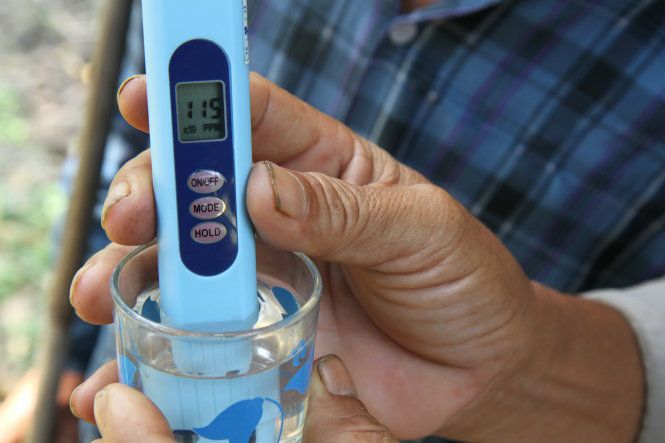Salt meter HANNA
Common uses of salinity meters
Salinity meters are used to determine the concentration of salt in solutions such as seawater, irrigation water, brackish water or any environment containing salt. This device operates based on the principle of light scattering when passing through the solution, thereby giving the corresponding salinity index.

There are many trusted brands on the market such as Hanna, Atago or Total Meter,... each product line is suitable for specific needs in farming, research or production.
Can the same machine be used to measure the salinity of water and soil?
Many people consider using the same salinity meter for both water and soil environments, either to save costs or because they don’t need to measure salinity very often. However, in reality, water and soil are two completely different environments, so not all meters are capable of measuring both.
Some salinity meters come with separate probes or offer a mode-switching feature, allowing flexible use for both water and soil samples. That said, most salinity meters on the market are optimized for a specific environment. For example, water salinity meters typically use electrical conductivity sensors or light refraction, while soil salinity meters require probes that come into direct contact with moist soil — and in some cases, the soil needs to be mixed with water to extract a solution for measurement.
In my personal opinion, it’s best to choose a device that clearly supports both functions, or one that is specifically designed for the environment in which you intend to use it.
Which salinity meter is easy to use and carry around?
When you need to measure salinity during trips or outdoor work, choosing a device that is easy to carry and easy to use is very important. The Atago PAL-03S salinity meter is quite suitable in this case. This device does not need batteries, you just need to drop a few drops of water on the glass and read the results immediately. Thanks to its compact and uncomplicated design, you can easily put it in your pocket and carry it with you at any time. If your work requires frequent salinity measurements in many different places, this device will help you save time without having to worry about charging or maintaining batteries.
What is the difference between mechanical and electronic salinity meters?
Mechanical salinity meters work on the principle of light refraction, with a simple design and no need for batteries. A typical example is the Atago PAL-03S, which is often used to measure salinity in seawater or saltwater. Users only need to drop a sample and observe through the lens to read the result.
Electronic meters like the Hanna HI 98319 use electronic sensors to measure salinity and display accurate results on a digital display. These electronic models are more accurate, quick to operate and are suitable for jobs that require stability such as in laboratories or research work.
Where to buy genuine salinity meter?
With a commitment to providing high quality products and dedicated service. Coming to us, you will receive:
- Genuine imported products, with clear and transparent origin.
- Each product is carefully checked before reaching the customer.
- Long term warranty policy
- Enthusiastic consulting staff, 24/7 support
- Delivery to your door, fast and free nationwide.
To ensure you are purchasing an authentic, high-quality salinity meter, you can visit our website at emin.vn. We are a trusted unit specializing in importing and distributing salinity meters for both water and soil, committed to providing genuine, high-quality products and professional consultancy support.
-
-
-
-
-
-
-
-
-
-
-
-
-
-
-
-
-
-
-
-
-
-
-
-